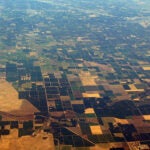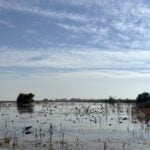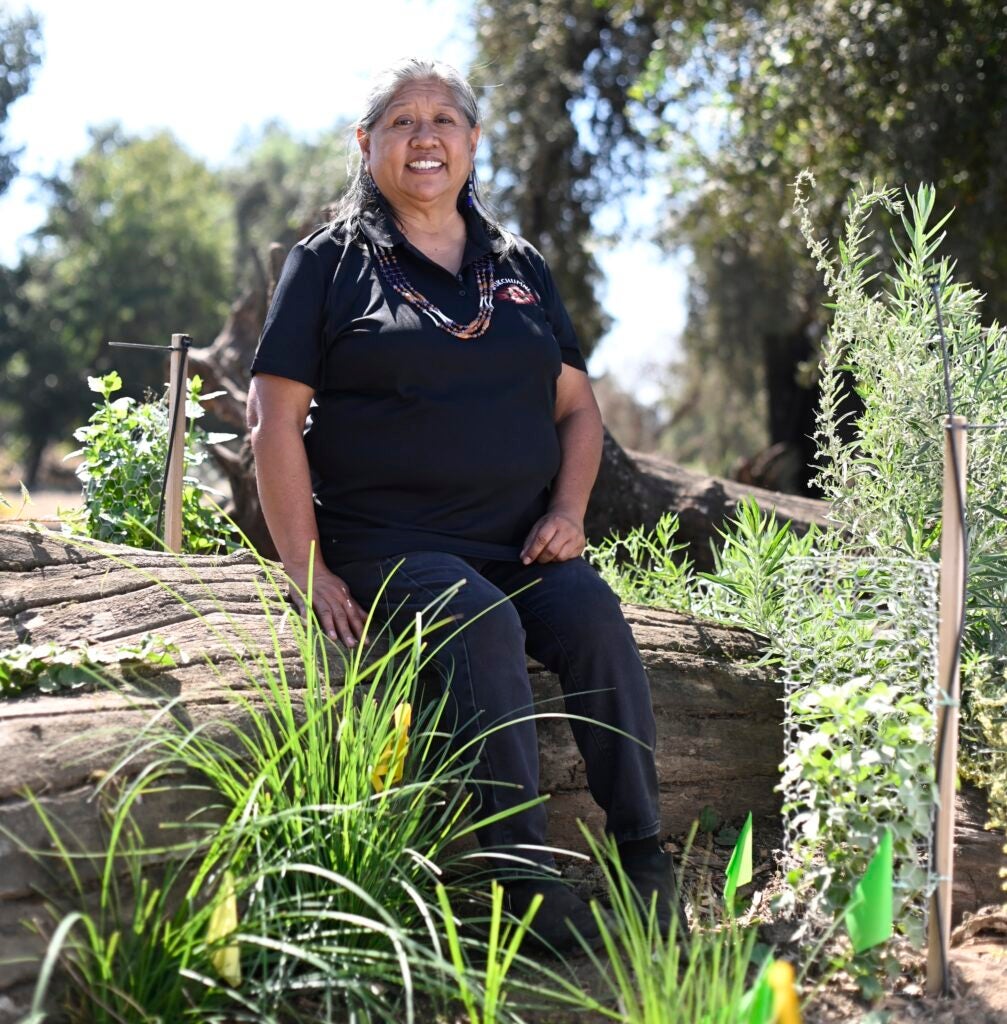
Wukchumni Tribal Chairperson and CEO Darlene Franco sits amid recent native plantings in a restoration area near Visalia funded through the California Multibenefit Land Repurposing Program.
Land and water conservation efforts are often implemented in highly local, context-specific ways, shaped by the land itself, the people who steward it, and the unique challenges they face. When the people leading this work have the chance to connect, it creates opportunities for deeper learning, collaboration, and a stronger sense of purpose.
Last month, the third annual Pause and Reflect meeting did just that, providing an opportunity to connect for participants of California’s Multibenefit Land Repurposing Program (MLRP) from around the state. The event brought together collaborators across sectors to strengthen the MLRP grantee community of practice, reflect on progress, and co-create a shared vision for continued advancement and support. After three years of monthly virtual meetings and semiannual in-person events, it was clear that regularly convening MLRP grantees working toward similar goals and facing similar challenges, across a variety of geographies, has created a solid peer learning network and a genuine community of practice.
MLRP complements California’s groundwater sustainability efforts by incentivizing land repurposing projects that conserve water, enhance recharge, and deliver environmental and community co-benefits. As one attendee noted, MLRP isn’t only about water. The program supports practitioners working across diverse ecosystems and cultural landscapes, balancing the complex needs of both the natural environment and the people that inhabit it.
Local Efforts and Collective Impact
The first day of the Pause and Reflect event brought attendees together to reflect on the past year’s accomplishments and share plans for continued progress. Compared to previous years, it was exciting to hear more talk about projects breaking ground or nearing that milestone. But participants also lamented challenges with complex permitting processes and how they have come to realize that the need for land repurposing support is so much greater than the funding available through the Department of Conservation.
To date, the Department of Conservation has awarded nearly $80 million to eight regions to work on multibenefit land repurposing. The California Climate Bond that voters passed last November included $200 million for MLRP, and the Legislature has allocated $32 million of that bond funding for the next round of grants in 2026.
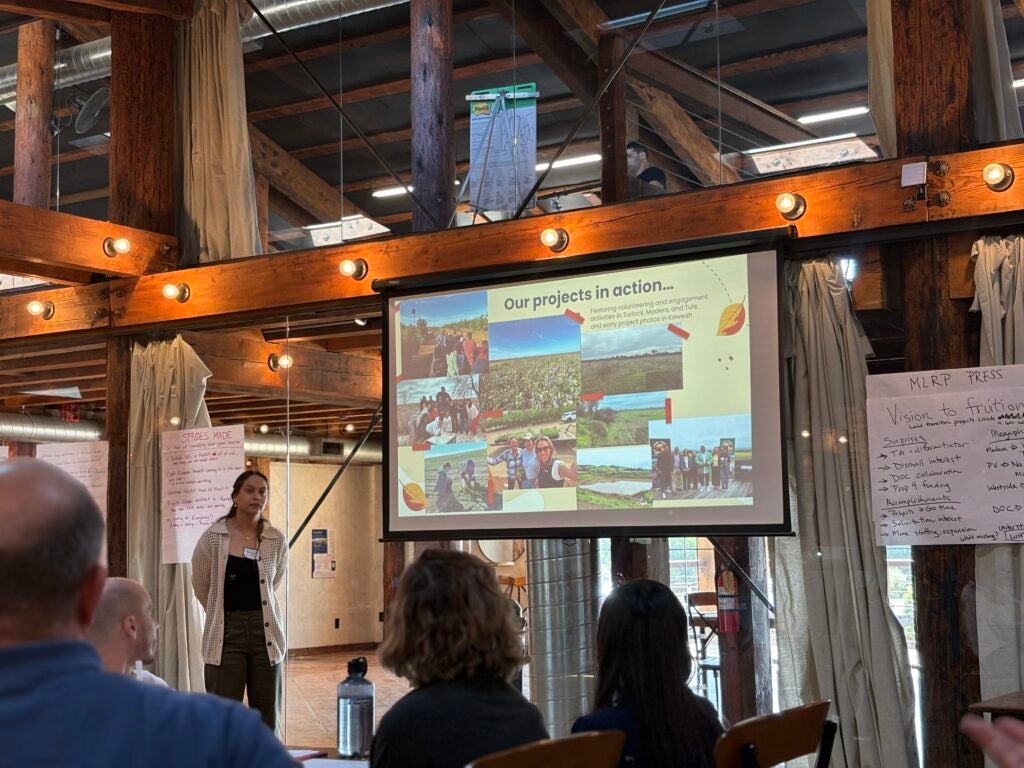
Stephanie Mercado of Self-Help Enterprises leads a discussion with MLRP grantees.
A Living Example: The Wuk’nain Restoration Project
Day two of the annual meeting of MLRP grantees took attendees into the field for an inspiring look at restoration in action. The tour of the Wuk’nain Restoration Project, led by members of the Wukchumni Tribe, served as a powerful example of what’s possible when land repurposing is guided by community values, ecological knowledge and local resilience.
The Wukchumni Tribe received $500,000 to restore more than 10 acres in a groundwater-dependent region in the Kaweah Subbasin. The Tribe aims to restore the land that was once a Christmas Tree farm near Visalia adjacent to the Kaweah Oaks Preserve into native habitat, including marsh and woodlands.
While the Wukchumni Tribe have been caring for land in the San Joaquin Valley and surrounding foothills for generations, they started thinking about restoration differently during the pandemic, when their community was facing food scarcity. “Our Tribe decided that we needed to be serious about taking care of ourselves,” says Tribal Chairperson and CEO Darlene Franco, “and our food sovereignty project began.”
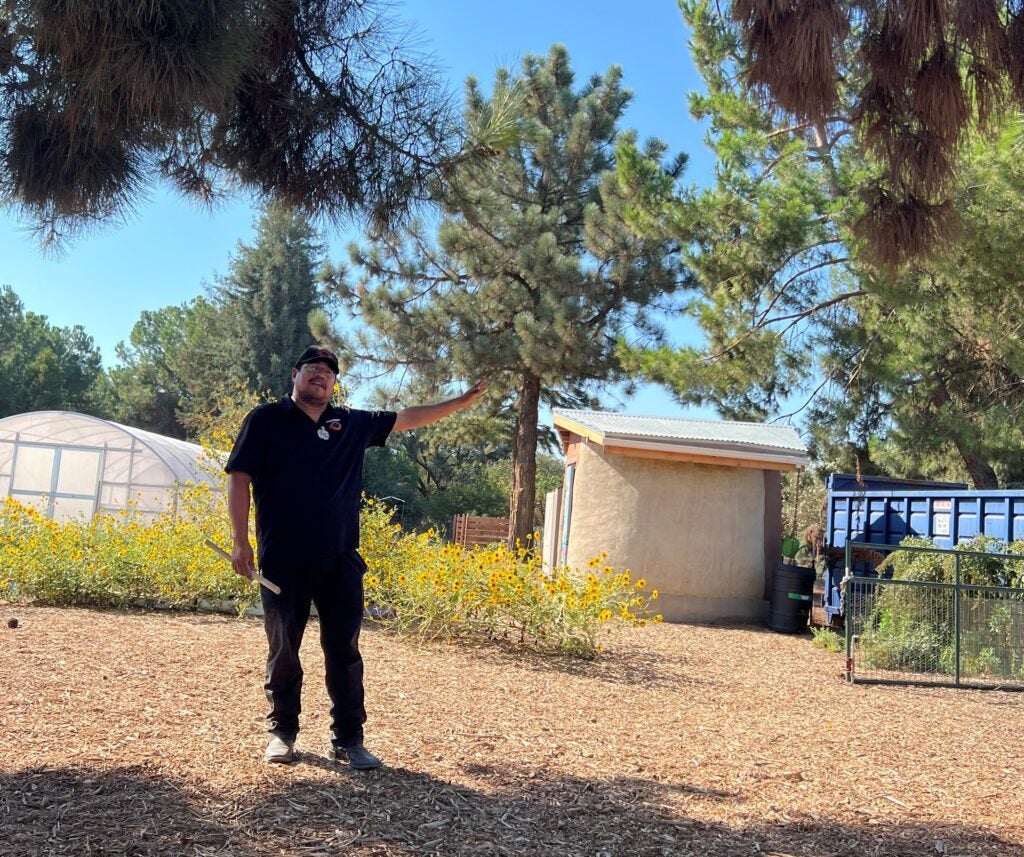
Wukchumni Farms Manager Lahoci Franco describes how the Tribe was inspired to begin gardening as part of a new focus on food sovereignty during the pandemic, and how that seed of an idea has blossomed to include a greenhouse, seed bank (to the right of him) and so much more.
The Tribe developed a closed-loop system designed to sustain both their community and the land they care for. They harvest traditional native plants for food, like elderberry and salt grass. Mallows and sages are also grown throughout the property, for medicinal use and traditional basketry. Seed saving, composting, and planting hedgerows of pollinator-attracting native plants helped the tribe restore their land, creating space for fruits, vegetables, and chickens to support food sovereignty.
Through a mix of MLRP-funded projects and strategic partnerships, including with the California Department of Transportation and Sequoia Riverlands Trust, the site is now home to water retention features, acorn processing stations, and wildlife habitat zones. In one section of the property, what was once a swamp is now being slowly and intentionally restored to its original condition, which will also help collect rainwater. Goat grazing helps manage vegetation while contributing to ecosystem health, even as natural challenges like flooding, rodent shifts, and predator activity remind us of the dynamic, interwoven nature of land systems.
“The funding we received from the MLRP grant has allowed us to hire a couple more people and really concentrate on repopulating native plants that used to be here,” says Franco. “We still have our people working on growing food, but this is really to work on the land, beautifying it and making it a welcoming place where our children could learn.”
The site serves as a valuable place for community learning, observation, and connection with the land. It is a living model of land use that supports biodiversity, honors local historic knowledge, and adapts in real time to changing climate conditions.
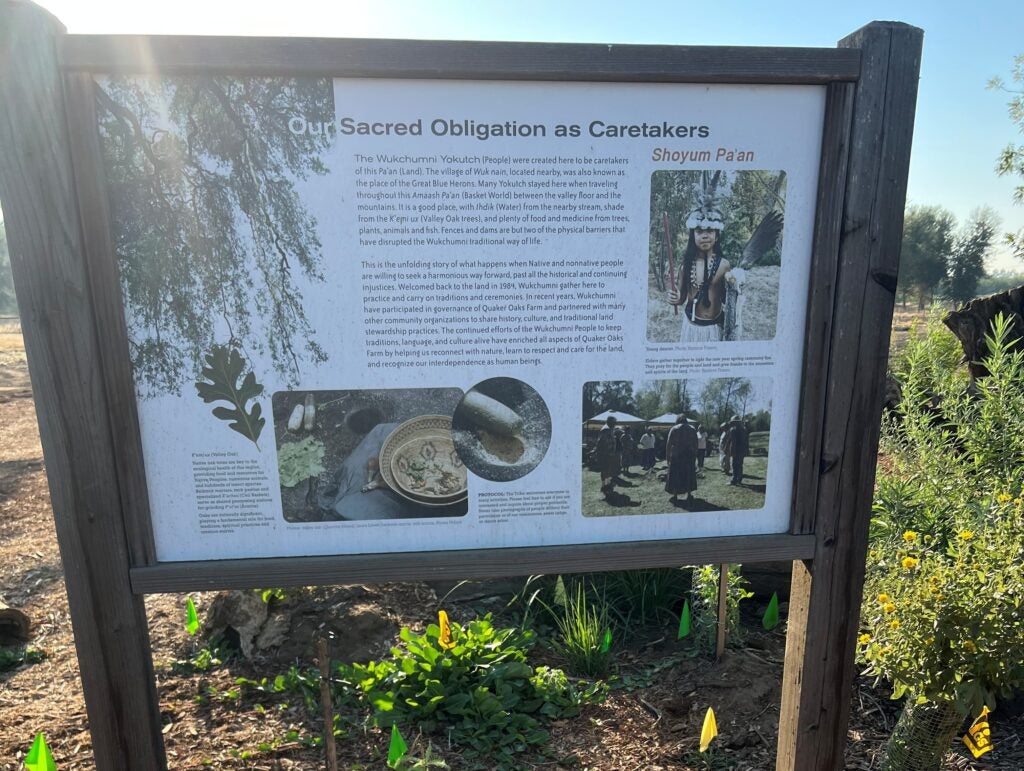
Looking Ahead
As California continues to navigate climate change, water scarcity, and related land use transitions, programs like the MLRP offer a hopeful path forward — one rooted in collaboration, adaptation, and shared stewardship. The EDF Water Team feels privileged to be engaged in this work and are inspired by the communities leading the way.
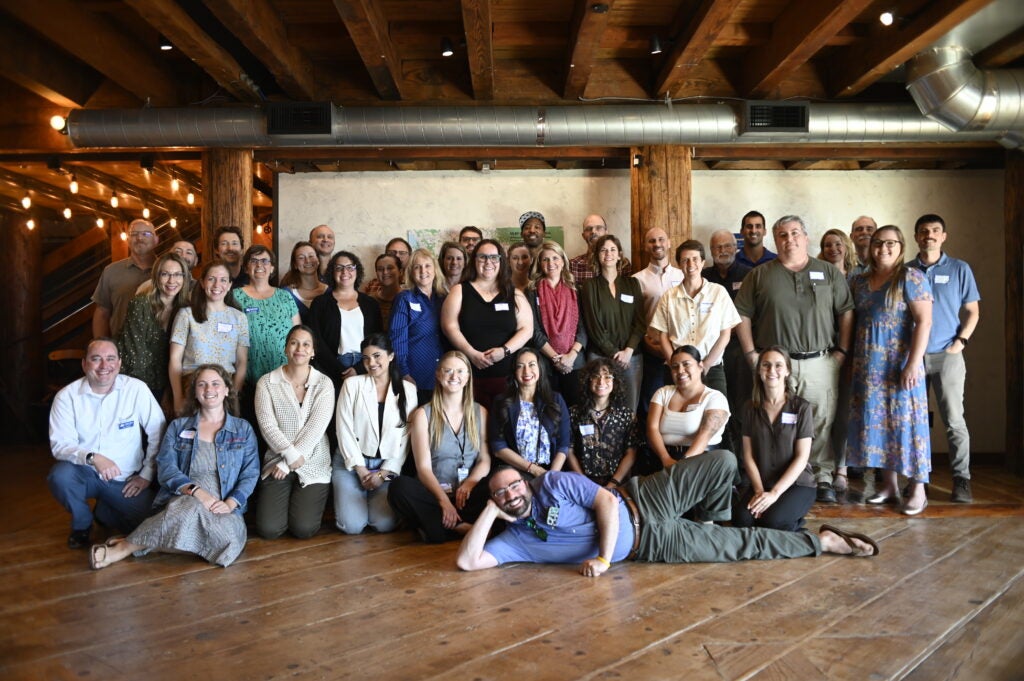
MLRP grantees gather at the end of a full day at their annual Pause and Reflect event for a group photo.










